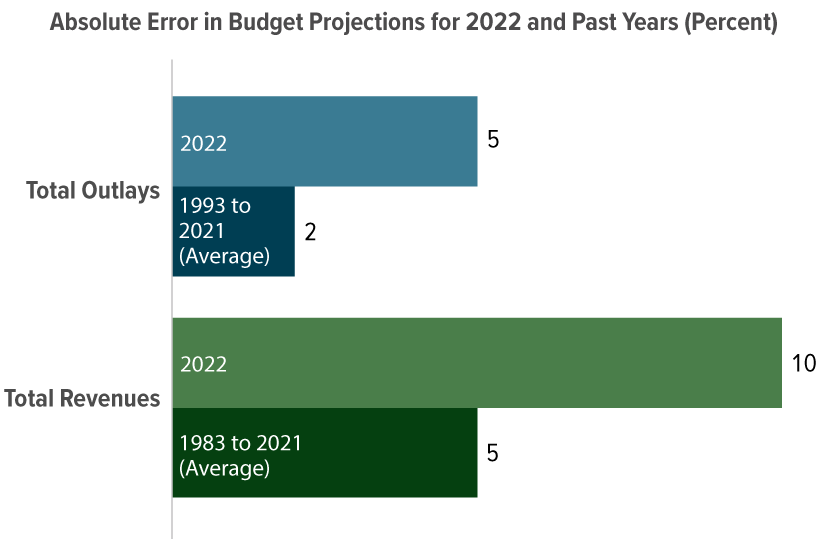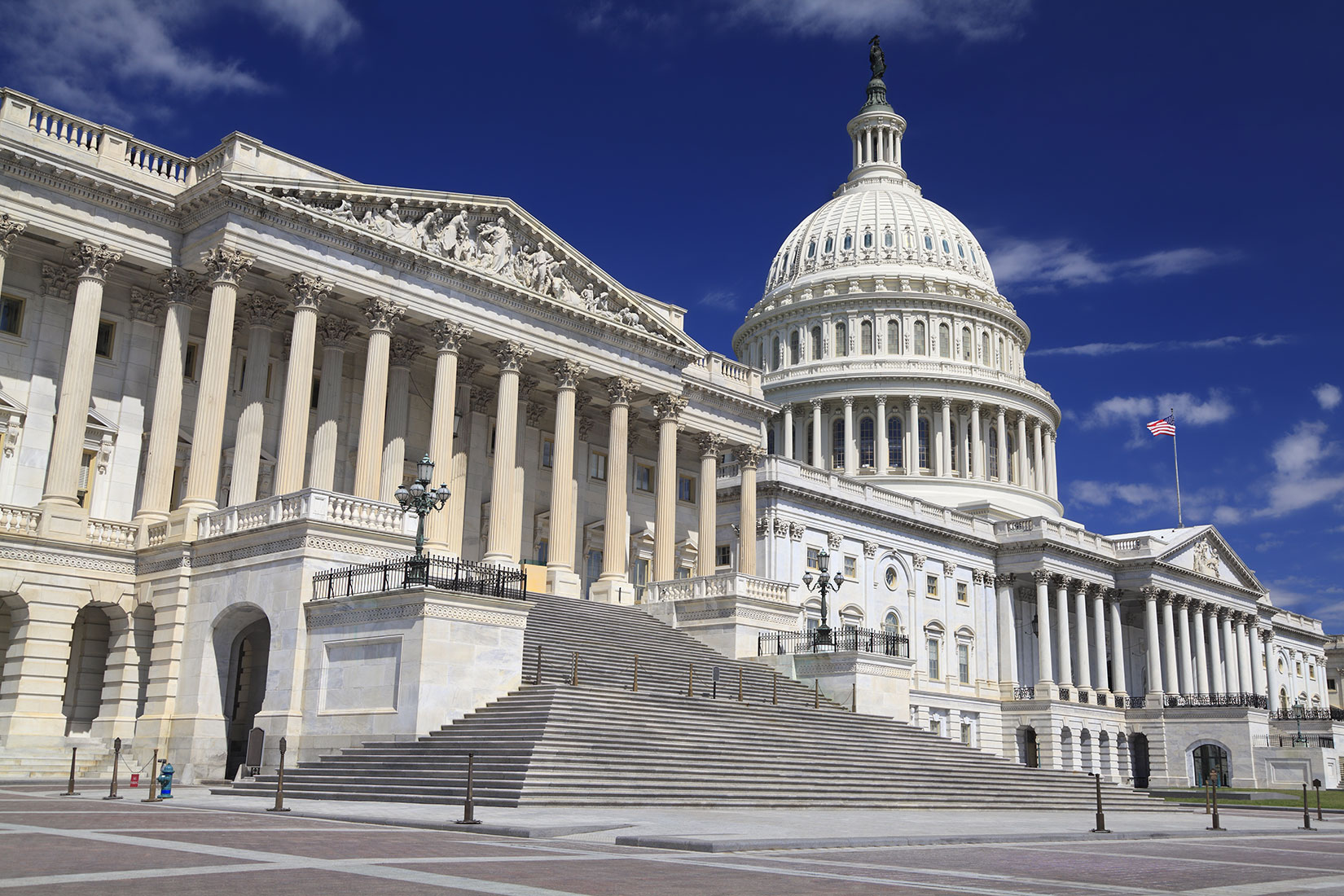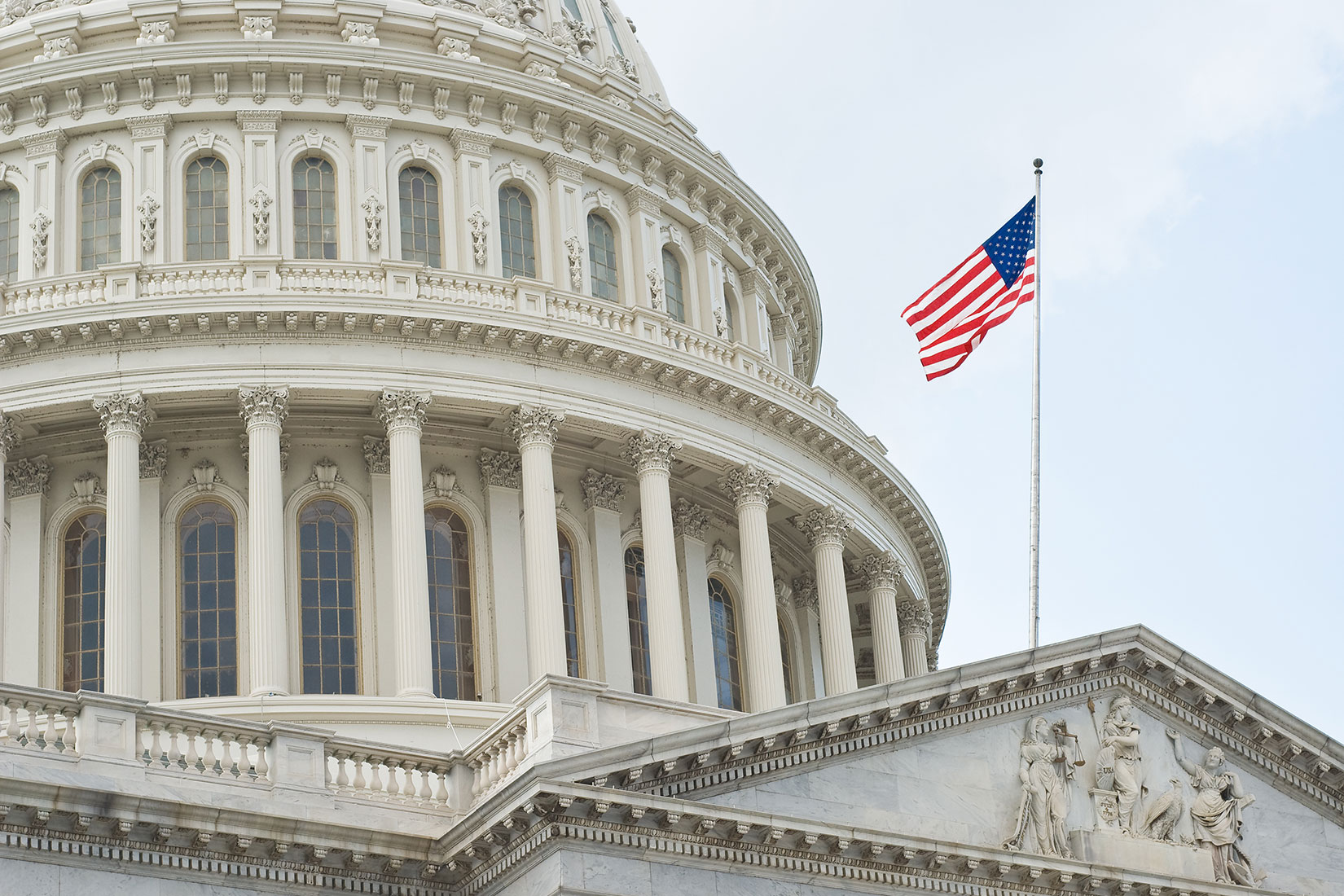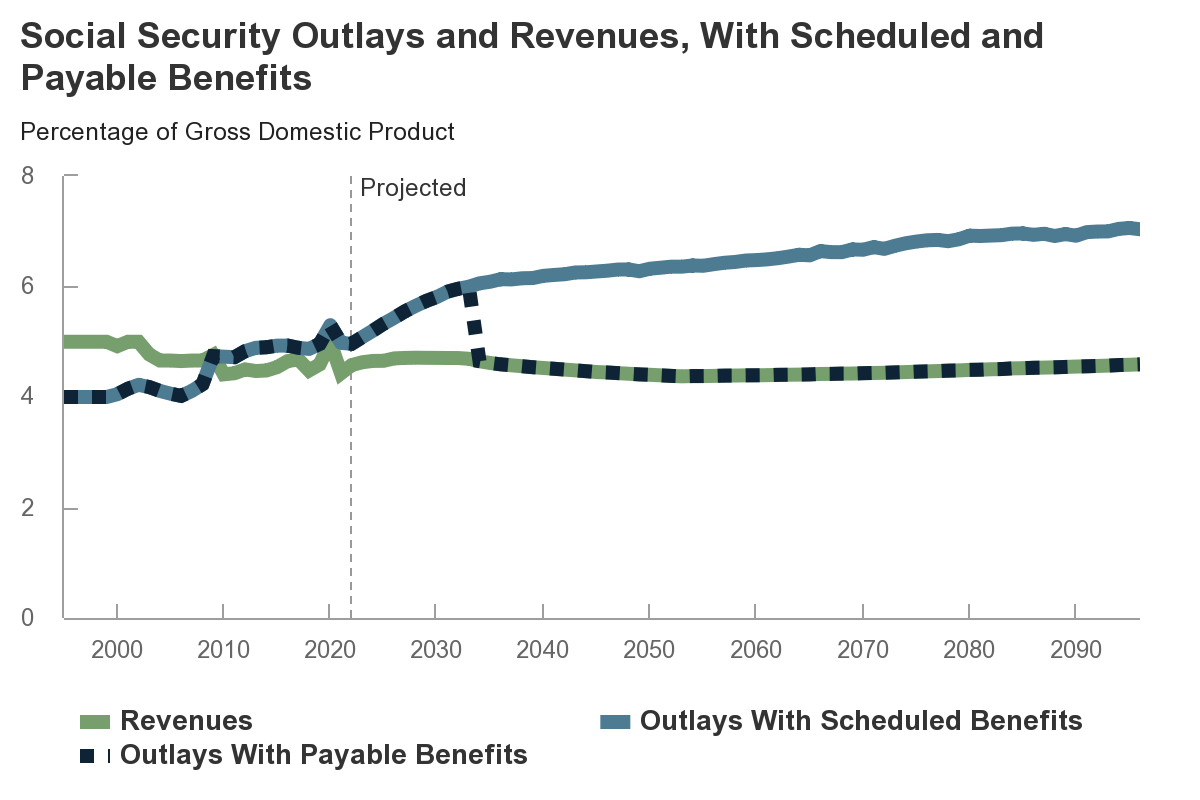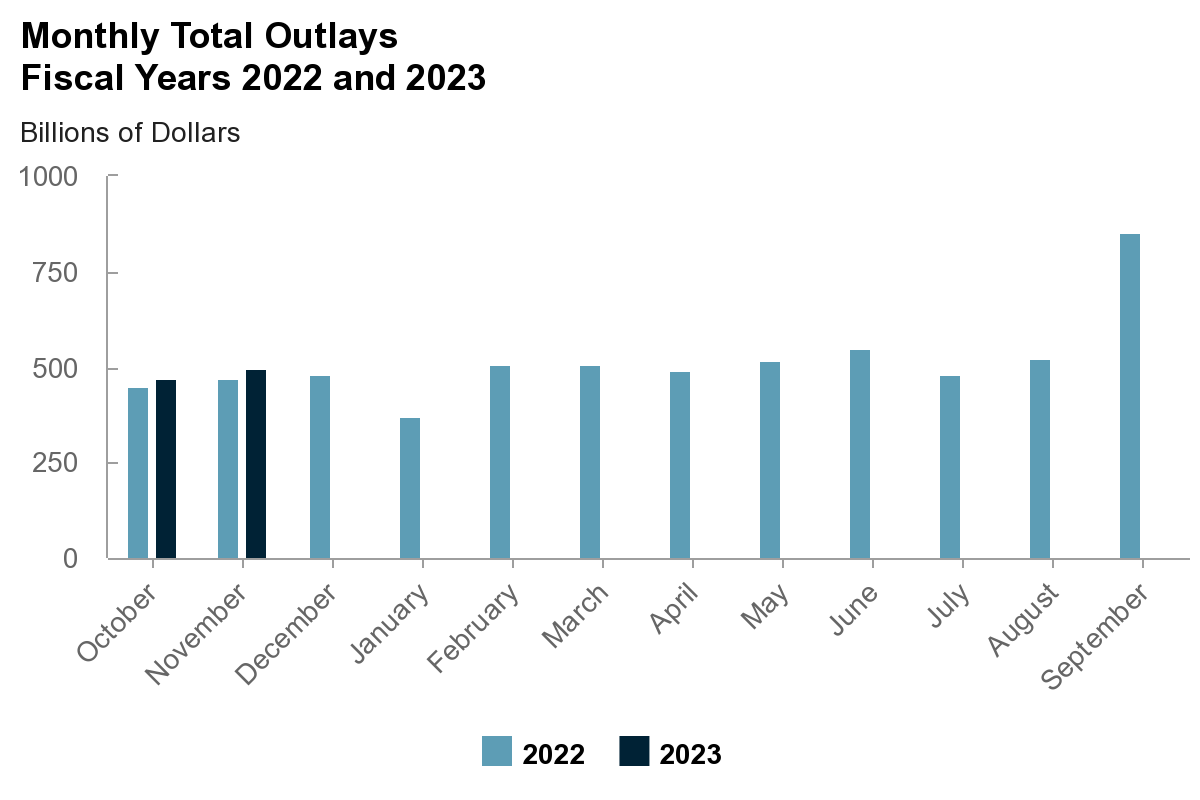In its July 2021 projections for fiscal year 2022, CBO underestimated revenues by 10 percent and outlays by 5 percent. CBO’s projection of the federal budget deficit for 2022 was more than the actual amount by 0.8 percent of GDP.
CBO Blog
CBO Director Phillip Swagel describes the agency's role in supporting Congress, lists what’s forthcoming from CBO, highlights the latest budget options volumes and a revamped cost estimates page, and emphasizes a commitment to transparency.
In this report, the latest in a quarterly series, CBO highlights its recent work and summarizes its work in progress.
Learn more about CBO, its work, and its processes in an introduction to the agency that is typically updated at the start of each Congress.
In CBO’s projections, spending on Social Security exceeds revenues to the program in 2022 and increases relative to GDP over the next 75 years, while revenues remain stable. If combined, the program’s trust funds would be exhausted in 2033.
CBO provides an overview of emissions of carbon dioxide (CO2, the most common greenhouse gas) in the transportation sector, describing the sources of and trends in such emissions and projecting their future path.
CBO describes recent trends in carbon dioxide (CO2) emissions in the electric power sector, changes in how electric power is produced and the reasons for those changes, and expectations for future CO2 emissions in that sector.
The federal budget deficit was $335 billion in October and November 2022, CBO estimates. But for the shift of some payments into September, the deficit would have been $399 billion, $42 billion more than the corresponding shortfall last year.
CBO’s Director describes the two volumes of budget options that the agency released today. They describe a variety of policies that would reduce federal budget deficits by increasing revenues or decreasing spending over the next 10 years.
CBO issues a volume describing 17 policy options that would each reduce the federal budget deficit by more than $300 billion over the next 10 years or, in the case of Social Security options, have a comparably large effect in later decades.


